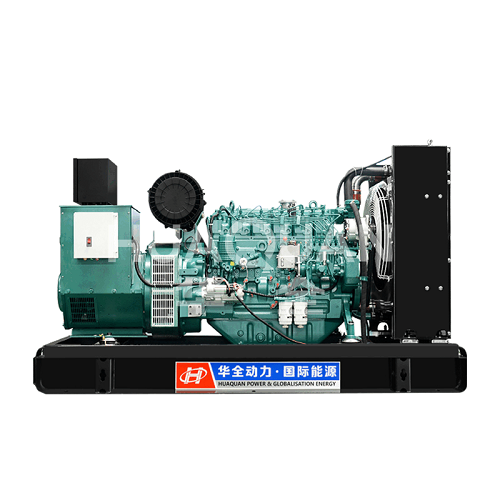
The signs of a
diesel generator failing to operate (also known as underpowered or under-output) can be observed in the following ways:
Core Performance (Directly Affecting Output)
1. Inability to Reach Specified Speed/Frequency:
The speed is unstable and fluctuates widely when unloaded.
The speed can reach the specified value when unloaded, but once the load increases, the speed/frequency drops rapidly and cannot be maintained at the specified value (such as 50Hz or 60Hz). This is the most direct and core symptom.
Even under light load, the speed/frequency is below the rated value.
2. Insufficient Output Voltage or Power:
The output voltage is below the rated value (such as 220V/380V), especially when loaded, with a significant voltage drop.
The generator is unable to drive the rated load within its rated power range. For example, a machine designed to drive a 100kW load may only drive 50kW, resulting in a severe drop in voltage and frequency, or even stalling.
The load-carrying capacity is significantly reduced, and abnormal performance occurs when the load exceeds a certain percentage (far below the rated load).
3. Sluggish response/weak acceleration:
When the load increases (such as when starting a high-power motor), the generator reacts sluggishly, with a significant drop in speed and slow recovery, which can even cause overload protection to activate or stall.
After increasing the throttle (increasing the fuel supply), the power increase is weak or delayed.
4. Abnormal exhaust:
Black smoke: This is the most typical sign of incomplete fuel combustion, usually indicating insufficient air intake or excessive fuel injection/poor atomization, resulting in incomplete combustion and insufficient power.
Blue or white smoke: While this phenomenon is usually related to oil or coolant burning, if accompanied by a lack of power, it may indicate poor cylinder sealing (resulting in insufficient compression pressure) or water in the fuel/improper injection timing, affecting combustion efficiency.
5. Abnormal operating sound:
The engine sound is dull and meaty, not as crisp and powerful as normal.
It may be accompanied by irregular knocking or grinding sounds.
The sound changes less sharply during acceleration.
6. Overheating:
Abnormally high coolant temperature (water temperature gauge indicates too high).
Exhaust temperature is too high.
Engine oil temperature is too high.
Overheating may result from insufficient power, such as prolonged overload operation, or it may be caused by a cooling system malfunction that causes power loss.
7. Abnormally increased fuel consumption:
Fuel consumption increases significantly under the same load. This is because engine efficiency decreases, requiring more fuel to maintain output, but the effect is ineffective.
8. Increased vibration:
Engine vibration is significantly greater than normal. This may be caused by malfunctioning individual cylinders (cylinder failure), problems with the crankshaft-connecting rod mechanism, or severe combustion failure, all of which can lead to uneven and reduced power output.
Important Note: There is a direct relationship between speed and frequency: In an AC generator, the frequency of the output AC power is completely determined by the engine speed (frequency = number of pole pairs × speed / 60). Therefore, if the engine speed does not increase, the frequency will inevitably decrease, resulting in unstable or declining output voltage, which is a key electrical indicator for determining "power loss." Consider the operating conditions when observing: note whether the symptoms occur under no-load, light-load, or heavy-load conditions. This is crucial for determining the cause of the fault.
Safety first: If the generator is found to be operating poorly, avoid prolonged operation under load, especially overloading, to prevent more serious damage (such as cylinder scuffing or tile burning). Shut down the generator immediately to investigate the cause or contact professional maintenance personnel.
In summary, the most core and easily observed signs of a poorly operating diesel generator are:
A sharp drop in speed/frequency after loading, unable to maintain the rated value;
A significant drop in output voltage with increasing load;
An inability to carry the rated load;
Accompanied by noticeable black smoke.
When these symptoms are observed, the generator system (fuel, air intake, exhaust, cooling, lubrication, cylinder pressure, control system, etc.) requires careful inspection and troubleshooting.
